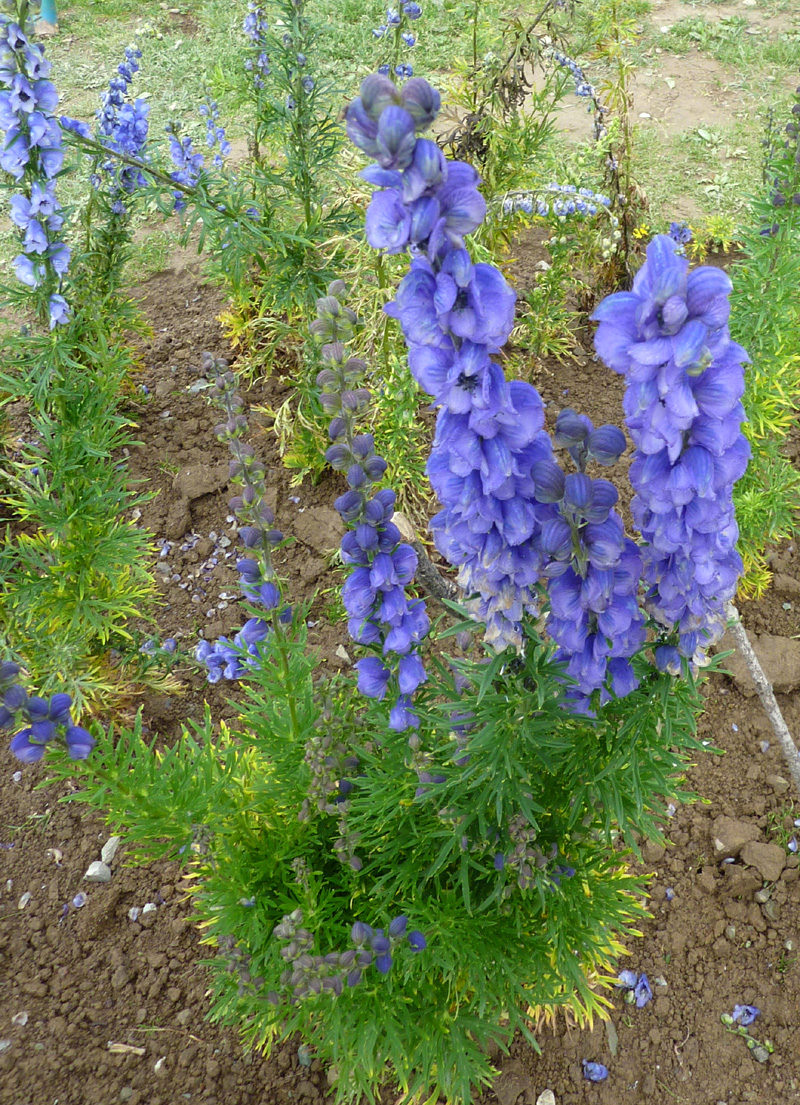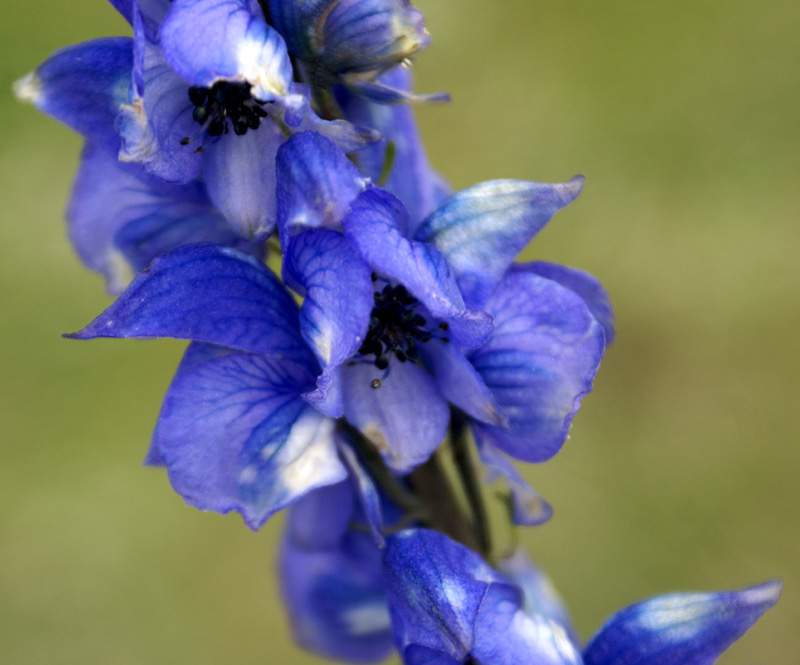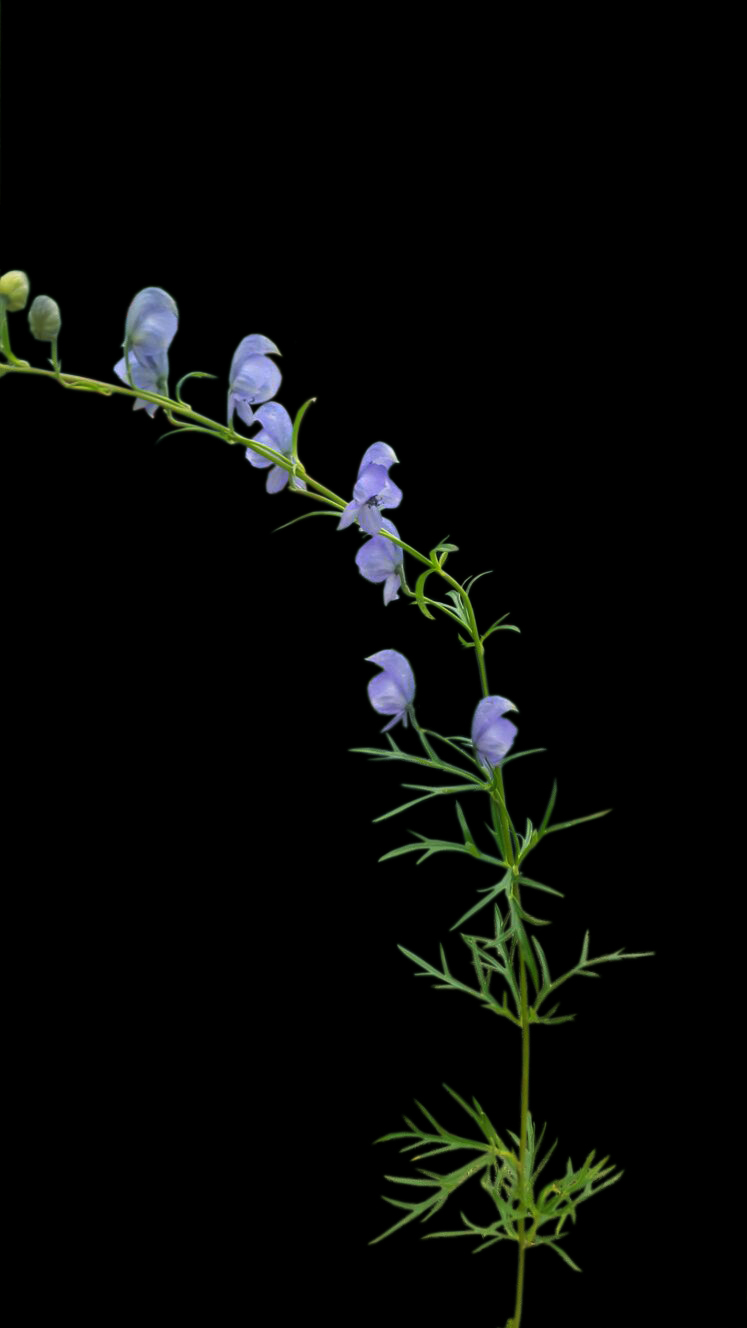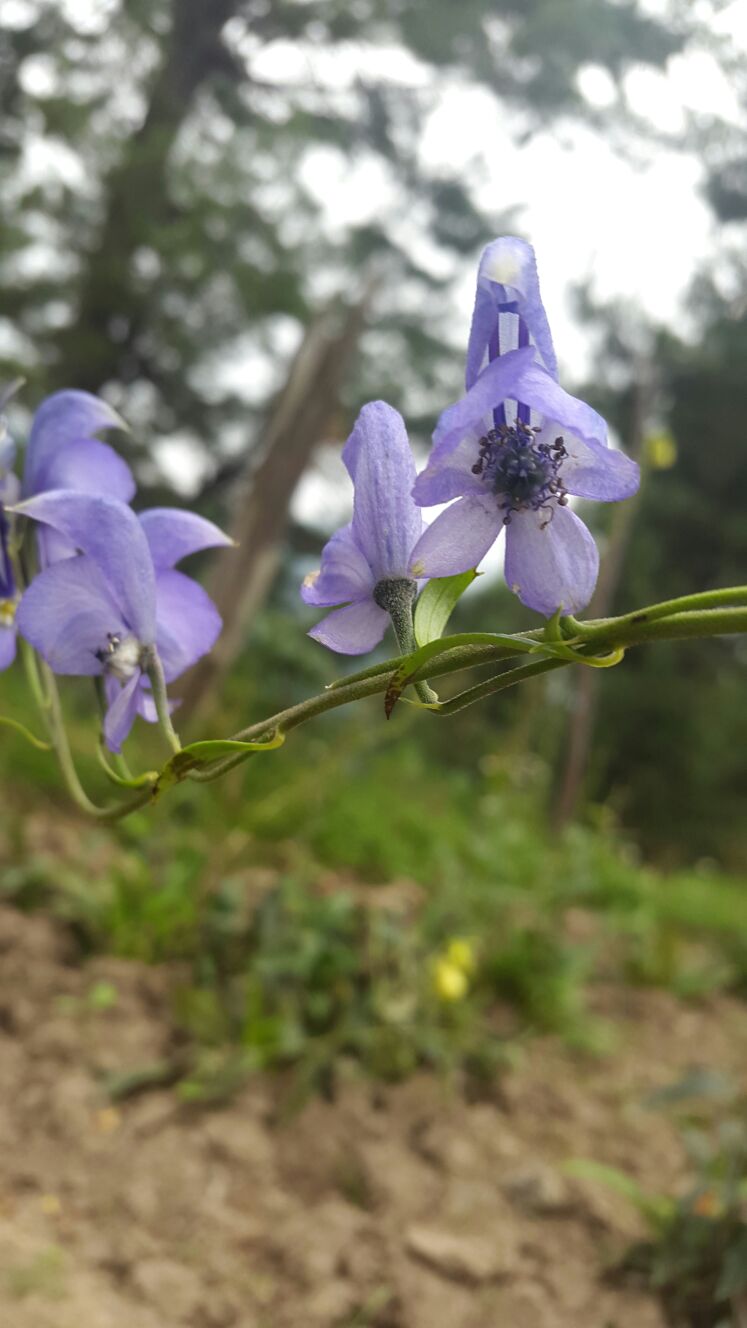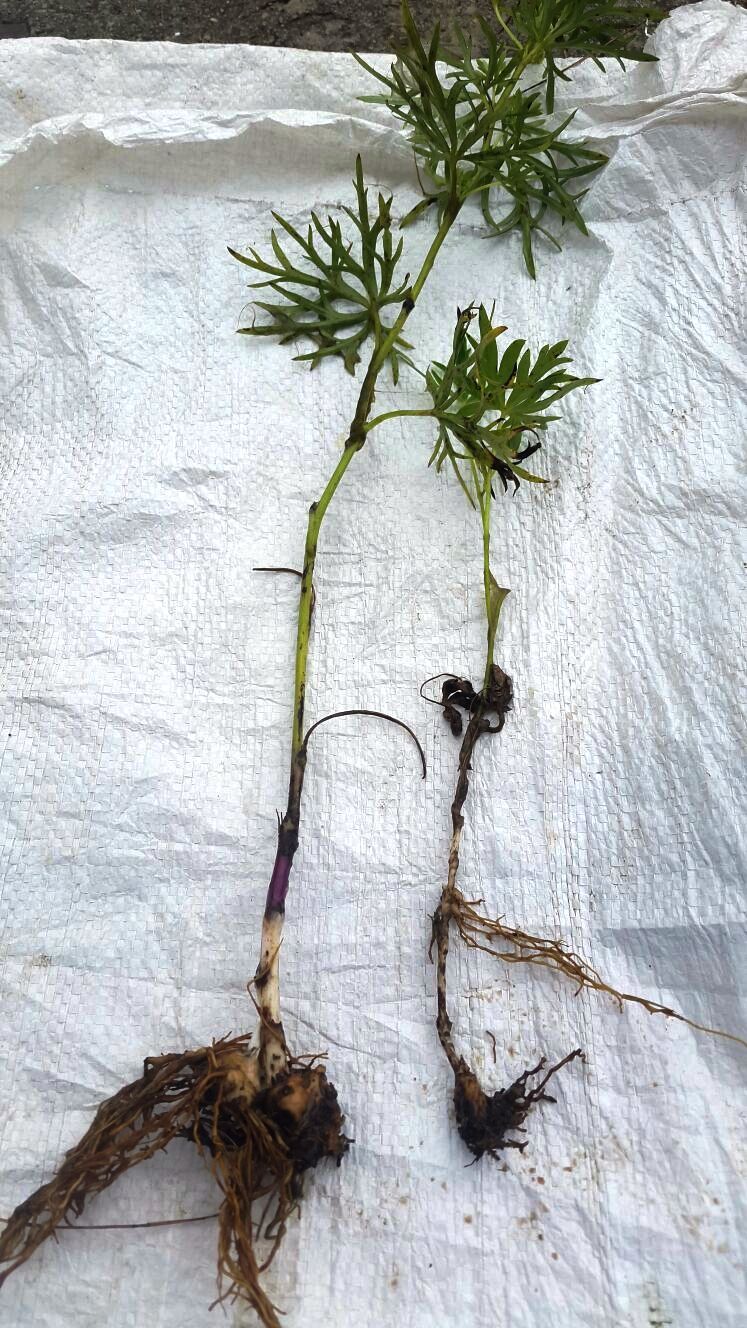|
IUCN Red List Status: Critically Endangered (CR)
. Aconitum chasmanthum Stapf ex Holmes, Mus. Repotr. Pharm. Soc. G. Brit. 2 1903. (Syn: Aconitum dissectum Watt [Illegitimate]; Aconitum hians Watt; Aconitum violaceum var. robustum Stapf; Aconitum chasmanthum subsp. baltistanicum Qureshi & Chaudhri; Aconitum kurramense Qureshi & Chaudhri; Aconitum napellus L.: Hook.f. & Thoms);
..
Common name: Gaping Monkshood, Gaping Flower Aconite • Hindi: mohri, mohru, patis kauri • Sanskrit: amrta, sthavaravisa, vajranaga, vatsanabha
.
Aconitum chasmanthum from Apharwat, Kashmir:
Aconitum chasmanthum Stapf ex Holmes, Mus. Report, Pharm. Soc. Great Britain 1903 syn: Aconitum napellus Hook.f. & Thoms. (non L.) ; Aconitum chasmanthum subsp. baltistanicum Qureshi & Chaudhri; Aconitum kurramense Qureshi & Chaudhri; Aconitum violaceum var. robustum Stapf Common names: Indian Napellus, Ban-bal-nag, Beshmolo, Mori
Tall leafy plant, up to 90 cm with ruberous root; leaves similar, though upper slightly smaller, 3-8 cm broad, cut alomost up to base into linear segments; flowers blue or purplish, in up to 30 cm long racemes; upper sepal curved back helmet-shaped, lateral oborbicular to nearly square; petals (nectaries) 2-5 with 5-7 mm long claw; carpels usually 5, follicles oblong, 10-15 mm, truncate.
Often confused with A. napellus, this species is distributed from Chitral to Kashmir at higher altitudes.
The whole plant is highly toxic – simple skin contact has caused numbness in some people. The dried root is analgesic, anodyne, diaphoretic, diuretic, irritant and sedative. The root is a rich source of active alkaloids, containing around 3%. It is best harvested as soon as the plant dies down in the autumn. This is a very poisonous plant and should only be used with extreme caution and under the supervision of a qualified practitioner.
Photographed from Apharwat, Kashmir in August, growing along forest margins.
It has also been introduced into newly developed alpine garden near Kongdor, middle stop of Gondola above Gulmarg. .
Ranunculaceae Fortnight: Aconitum chasmanthum from Kashmir-GSJAN01 : 6 posts by 5 authors. Attachments (2).
Aconitum chasmanthum Stapf ex Holmes, Mus. Report, Pharm. Soc. Great Britain 1903
syn: Aconitum napellus Hook.f. & Thoms. (non L.) ; Aconitum chasmanthum subsp. baltistanicum Qureshi & Chaudhri; Aconitum kurramense Qureshi & Chaudhri; Aconitum violaceum var. robustum Stapf Common names: Indian Napellus, Ban-bal-nag, Beshmolo, Mori
Tall leafy plant, up to 90 cm with ruberous root; leaves similar, though upper slightly smaller, 3-8 cm broad, cut alomost up to base into linear segments; flowers blue or purplish, in up to 30 cm long racemes; upper sepal curved back helmet-shaped, lateral oborbicular to nearly square; petals (nectaries) 2-5 with 5-7 mm long claw; carpels usually 5, follicles oblong, 10-15 mm, truncate.
Often confused with A. napellus, this species is distributed from Chitral to Kashmir at higher altitudes.
The whole plant is highly toxic – simple skin contact has caused numbness in some people. The dried root is analgesic, anodyne, diaphoretic, diuretic, irritant and sedative. The root is a rich source of active alkaloids, containing around 3%. It is best harvested as soon as the plant dies down in the autumn. This is a very poisonous plant and should only be used with extreme caution and under the supervision of a qualified practitioner.
Photographed from Apharwat, Kashmir in August, growing along forest margins. It has also been introduced into newly developed alpine garden near Kongdor, middle stop of Gondola above Gulmarg. wonderful yes it is Aconitum chasmanthum Thanks Sir for this beautiful upload..the pics suggest that these are recorded from any garden.. A very important medicinal plant. Thanks … There is a small alpine garden maintained at Khillenmarg (rather near Kongdor) the first landing of Gandola at about 3000 m, just above the tree line, growing plants collected from surrounding areas. A few medicinal plants are grown here. Beautiful pictures. Coming to some character searching from the pictures. Bilaterally symmetric flowers.
Upper sepals hood like. These blue coloured are sepals. Underneath them will be 2 petals. Am I right?
Important aspects related to the plant have already been mentioned by you as regards poisonous nature etc. Very nice. Ranunculaceae Fortnight:: Aconitum from Ganesh Top NSJ-Jan-06 : 6 posts by 3 authors. Attachments (2)
Aconitum Sp. Photo taken at 14000′ at Ganesh Top on the way to Amarnath yatra (Aug 2013) Looks like Aconitum chasmanthum. Surprisingly there is no mention of Aconitum chasmanthum in FOH book by Polunin. It is mentioned in FOH by a different name Aconitum violaceum var robustum which is a synonym of A. chasmanthum Oh. Thanks. The picture of flowers of Aconitum are so similar except for the shade in colour. Even the leaves are also similar. Good to learn so many things. Aconitum (Ranunculaceae) for ID from Gulmarg, Kashmir : 3 posts by 2 authors. Attachments (6)
Requesting ID please. Aconitum chasmanthum I hope Yes Sir. . References:
|
Aconitum chasmanthum
Updated on December 24, 2024


